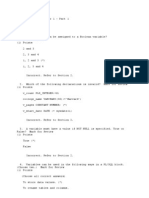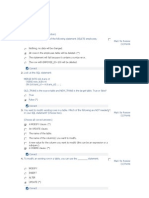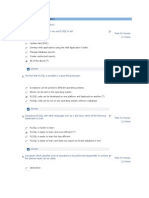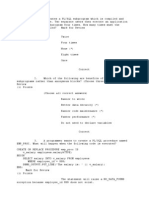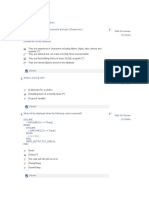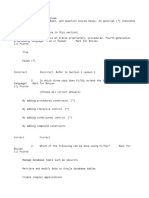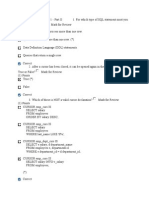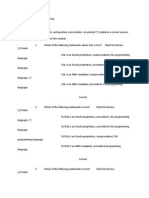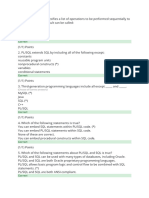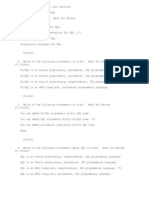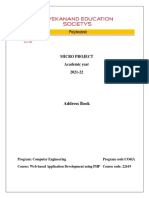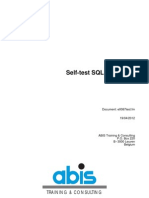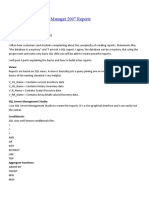0% found this document useful (0 votes)
2K views22 pagesMidterm Part3
1. The invalid declaration is v_pages CONSTANT NUMBER; as the data type is not specified.
2. A table column name should not be used as the name of a variable.
3. The values that can be assigned to a Boolean variable are 1, 2 and 3 (Null, False, True).
Uploaded by
alexpuiuCopyright
© Attribution Non-Commercial (BY-NC)
We take content rights seriously. If you suspect this is your content, claim it here.
Available Formats
Download as PDF, TXT or read online on Scribd
0% found this document useful (0 votes)
2K views22 pagesMidterm Part3
1. The invalid declaration is v_pages CONSTANT NUMBER; as the data type is not specified.
2. A table column name should not be used as the name of a variable.
3. The values that can be assigned to a Boolean variable are 1, 2 and 3 (Null, False, True).
Uploaded by
alexpuiuCopyright
© Attribution Non-Commercial (BY-NC)
We take content rights seriously. If you suspect this is your content, claim it here.
Available Formats
Download as PDF, TXT or read online on Scribd
/ 22



